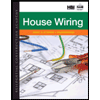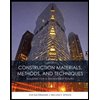Q. 2) Using the Method of Joints: a) Find the force in members GJ, JD, JC, and GC. b) State whether each member is in tension or compression. 10 kN 6 KN A go 000 3 m 4 kN B H 3 m 4 m 3 m 8 kN D 2 m 3 m 5 kN E
Q. 2) Using the Method of Joints: a) Find the force in members GJ, JD, JC, and GC. b) State whether each member is in tension or compression. 10 kN 6 KN A go 000 3 m 4 kN B H 3 m 4 m 3 m 8 kN D 2 m 3 m 5 kN E
Chapter4: Plane And Space Trusses
Section: Chapter Questions
Problem 53P
Related questions
Question

Transcribed Image Text:**Q.2) Using the Method of Joints:**
**a) Find the force in members GJ, JD, JC, and GC.**
**b) State whether each member is in tension or compression.**
---
**Diagram Description:**
The diagram provided is a truss structure with different members and external forces applied. Below is a detailed explanation of the truss layout:
- The truss rests on supports at points A and E.
- Horizontal distances between the joints are labeled: 3 meters between A and B, 3 meters between B and C, 3 meters between C and D, and 3 meters between D and E.
- The vertical height from the base (A through E) to point G is labeled as 4 meters.
**External Forces Applied:**
- A downward force of 6 kN is applied at joint A.
- A downward force of 4 kN is applied at joint H.
- A downward force of 10 kN is applied at joint G.
- A downward force of 8 kN is applied at joint J.
- A downward force of 5 kN is applied at joint E.
**Joints and Members:**
- The truss consists of several joints connected by straight members.
- Joint G is the top of the truss, and it forms a triangle with joints H (left) and J (right).
- There are multiple members connecting the various joints:
- AB, BH, HC, and CE are horizontal members.
- AG, GH, GJ, and JE are inclined members.
- Vertical members: HJ and GC.
---
To solve for the forces in members GJ, JD, JC, and GC:
1. **Joint G**:
- Consider equilibrium conditions (ΣF_x = 0, ΣF_y = 0) to solve for forces in members connected to G.
- Given the load, calculate the reaction forces at the supports (A and E).
2. **Member Forces**:
- Use trigonometry for inclined members to determine the horizontal and vertical components.
- Determine if each member is in tension (pulling apart) or compression (pushing together).
Let's apply these principles step-by-step to find the forces in the specific members GJ, JD, JC, and GC, determining if they are in tension or compression accordingly. Complete calculations require equilibrium equations and methodical resolution for
Expert Solution
This question has been solved!
Explore an expertly crafted, step-by-step solution for a thorough understanding of key concepts.
This is a popular solution!
Trending now
This is a popular solution!
Step by step
Solved in 2 steps with 7 images

Knowledge Booster
Learn more about
Need a deep-dive on the concept behind this application? Look no further. Learn more about this topic, civil-engineering and related others by exploring similar questions and additional content below.Recommended textbooks for you


Materials Science And Engineering Properties
Civil Engineering
ISBN:
9781111988609
Author:
Charles Gilmore
Publisher:
Cengage Learning

Steel Design (Activate Learning with these NEW ti…
Civil Engineering
ISBN:
9781337094740
Author:
Segui, William T.
Publisher:
Cengage Learning


Materials Science And Engineering Properties
Civil Engineering
ISBN:
9781111988609
Author:
Charles Gilmore
Publisher:
Cengage Learning

Steel Design (Activate Learning with these NEW ti…
Civil Engineering
ISBN:
9781337094740
Author:
Segui, William T.
Publisher:
Cengage Learning

Engineering Fundamentals: An Introduction to Engi…
Civil Engineering
ISBN:
9781305084766
Author:
Saeed Moaveni
Publisher:
Cengage Learning

Residential Construction Academy: House Wiring (M…
Civil Engineering
ISBN:
9781285852225
Author:
Gregory W Fletcher
Publisher:
Cengage Learning

Construction Materials, Methods and Techniques (M…
Civil Engineering
ISBN:
9781305086272
Author:
William P. Spence, Eva Kultermann
Publisher:
Cengage Learning